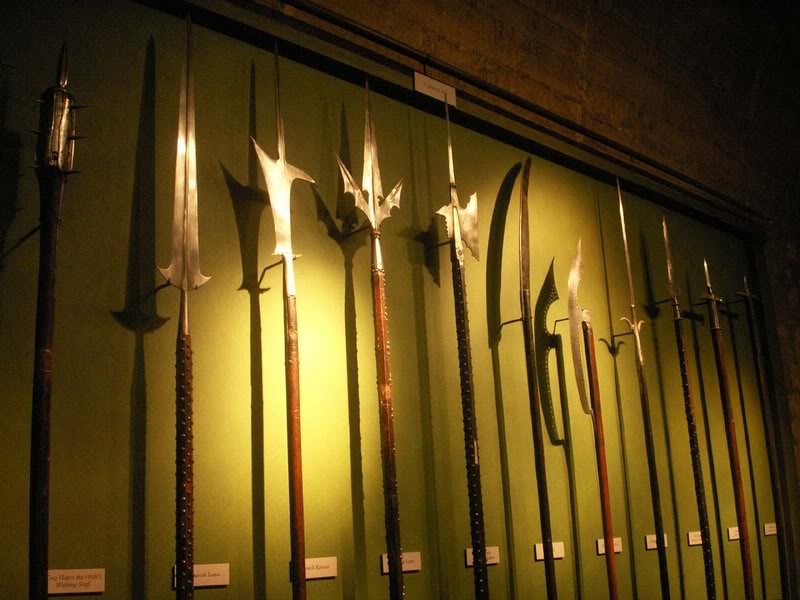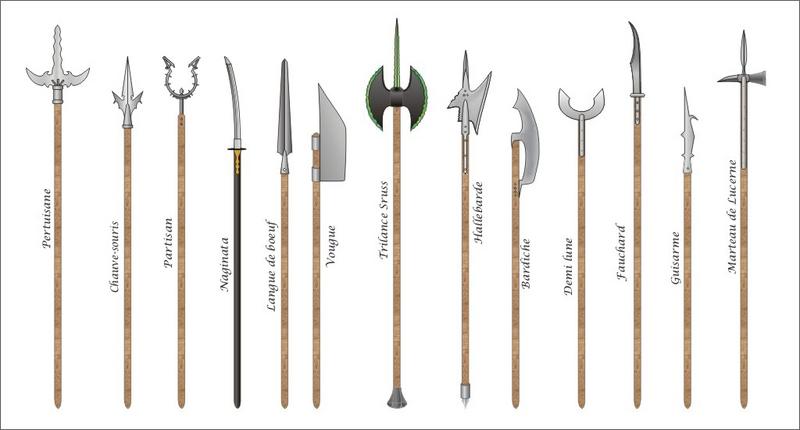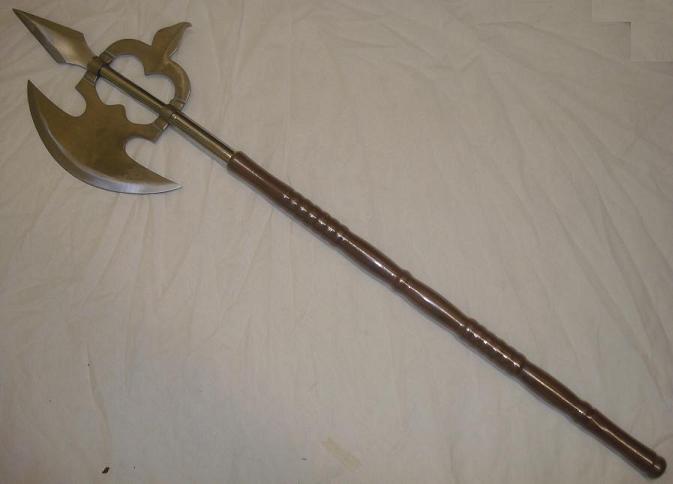The Polearm
Written by Terry Houlding
The term Polearm covers a broad range of weapon types which were affixed to the end of a pole. A polearm may range from 4 to 15 feet in length. Literally a polearm is "an armament on a pole."
Intro
The unsung hero of medieval combat, the Polearm, is often regarded as one of the most effective weapons of military history and its employment through successive armies on both Western and Eastern battlefields is prevalent. In 1599 in his book ‘Paradoxes of Defense’ George Silver rated the Glaive (a class of Polearm) above all other hand to hand combat weapons.
Literally meaning ‘an armament on a pole’, the term Polearm covers a broad range of weapon types which were affixed to the end of a pole ranging from 4 to 15 feet in length. These weapons took the form of blades, axes, hammers and even flails as well as any variation in-between. The pole gave an already deadly weapon, an even greater reach as well as the momentum when the Polearm was swung to cleave through armour with little resistance. In the hands of a trained soldier they were considered far superior to the sword and variants of Polearms were particularly devastating against Cavalry and were employed by infantry who could form a near impenetrable wall of razor edged steel.
In the West:
The earliest use of Polearms dates back to the Vikings in the 11th century and appeared from then onwards throughout the eras as a staple of every battle until the advent of gunpowder and its use in the musket which irrevocably changed the shape of the battlefield. Due to their nature, Polearms were cheap to produce and were favoured by peasants who often formed the bulk of a ruling lord’s army until standing forces became the norm.
Some of the more well-known European Polearms were known as: Halberds, Glaives, Guisarmes and Bec de Corbins to name but a few and are distinguished by certain factors. For example, the Guisarme was originally a hook on the end of the pole used to pull horsemen and knights from their mounts where the soldiers would then resort to close combat weapons such as short swords and daggers to finish the unfortunate riders. These hoolks were later incorporated into blades, spikes and axes as a reverse hook to double the effectiveness of the Polearm.
In the East.
The Polearm saw equal use throughout ancient Chinese and Japanese history. In China it was known as the Guan Dao and thought to be have been made for a Han dynasty general: Guan Yu whose specific blade was named the ‘Green Dragon Crescent Blade’. This was a bladed weapon with deep curve with a metal spike for counter balance and reverse strikes. Used by cavalry and infantry alike, the weapon’s design meant that in combat, the wielder would rely on great sweeping cuts which would slice through most forms of armour available during the period. A more gruesome version of the Polearm was the Pu Dao, also known as the horse cutter sabre, its use eponymous and mainly used by infantry.
In Japan, the Polearm was known as the Naginata and used by Samurai warriors where its long reach and skilled practition was used to clear spaces on the battlefield. The Naginata was highly regarded as a weapon and like its European cousins, only declined in use with the introduction of rifles. Even then, it did not die out completely. It was adopted by Japanese women of the Samurai class and often formed a part of a wedding dowry. Its only intended use was for women to defend their homes whilst the men were away. However a few Japanese women secured places in the history books as they were famed for their prowess with the weapon.
Polearms today
As with most melee weapons of the medieval period, Polearms are now likely to be found in a museum. However, its success as a weapon retains a degree of prestige. For example, the Halberd forms part of the ceremonial dress of the Swiss Guard (where it was also known as the Swiss Voulge) who were famed for their employment of the weapon. The English Beefeaters who guarded the Tower of Londons prisoners as well as the English monarchs crown jewels also have Polearms as part of their attire in the form of the Partisan.
In Japan the Naginata is still practised as part of the martial art, Naginatajutsu or in its more modern form Gendai Budo. In the Chinese museum in Shanhaiguan rests a ‘testing’ Guan Dao, where its weight was used to test Military Officers who would be awarded their rank based on the weight of the Guan Dao. This museum artefact is the heaviest known example of a Guan Dao weighing in at 83Kg!
Polearms are still represented well in the gaming industry, both on the table-top war game by Games Workshop, Warhammer and its computer game derivative, as well as a host of other computer games. Well known examples include World of Warcraft, Final Fantasy XI, The Elder Scrolls: Morrowind and the Diablo games to name but a few.
The Polearm then is truly one of the greatest weapons to grace the battlefield and only the prestige and showmanship of wielding a sword has kept this weapon in the shadows.
Terry Houlding
is a freelance graphics designer, photographer and writer from Gloucester, UK. Having spent 10 years in the military, he sought to branch out from a rewarding career into a more creative direction. He lives with his wife, Natalie & daughter Ocean. They are preparing to emigrate to Australia to escape the terrible english weather and find a beach that is useful for more than just keeping the sea at bay. His website and work can be found here: www.nataliehoulding.com



